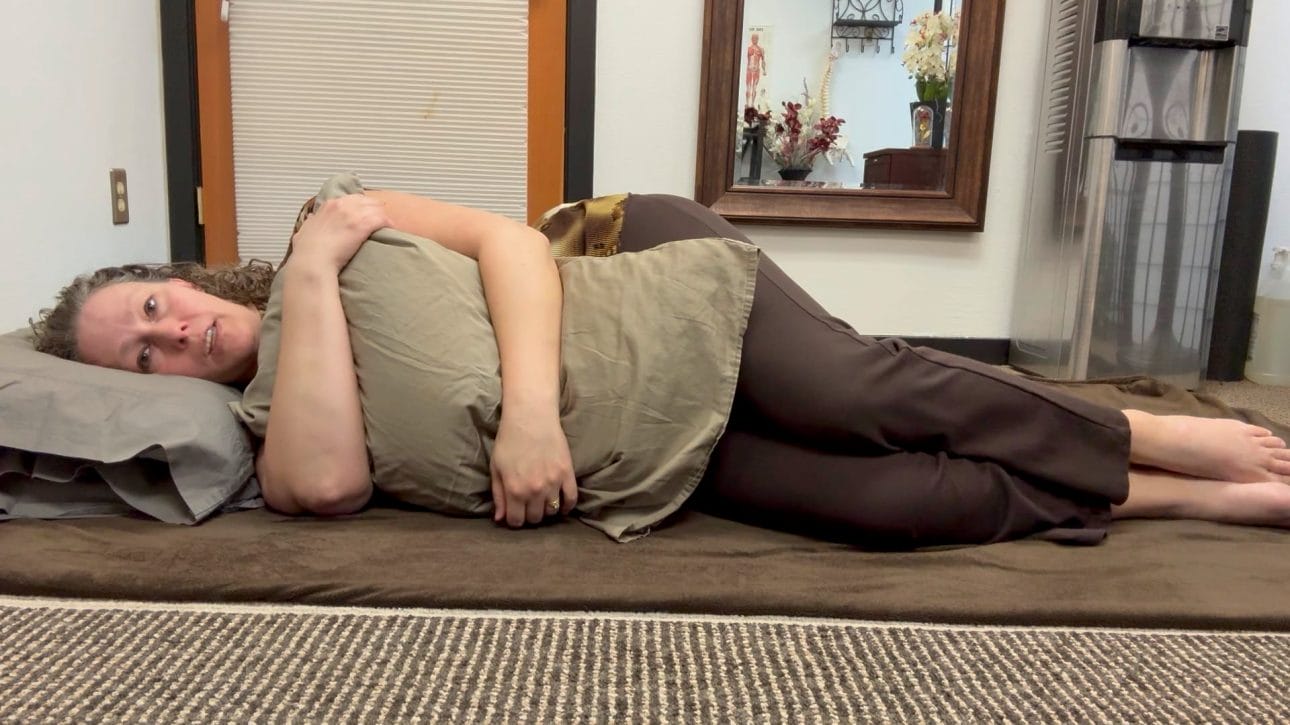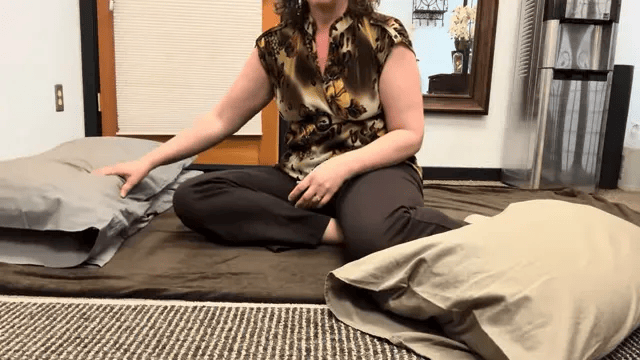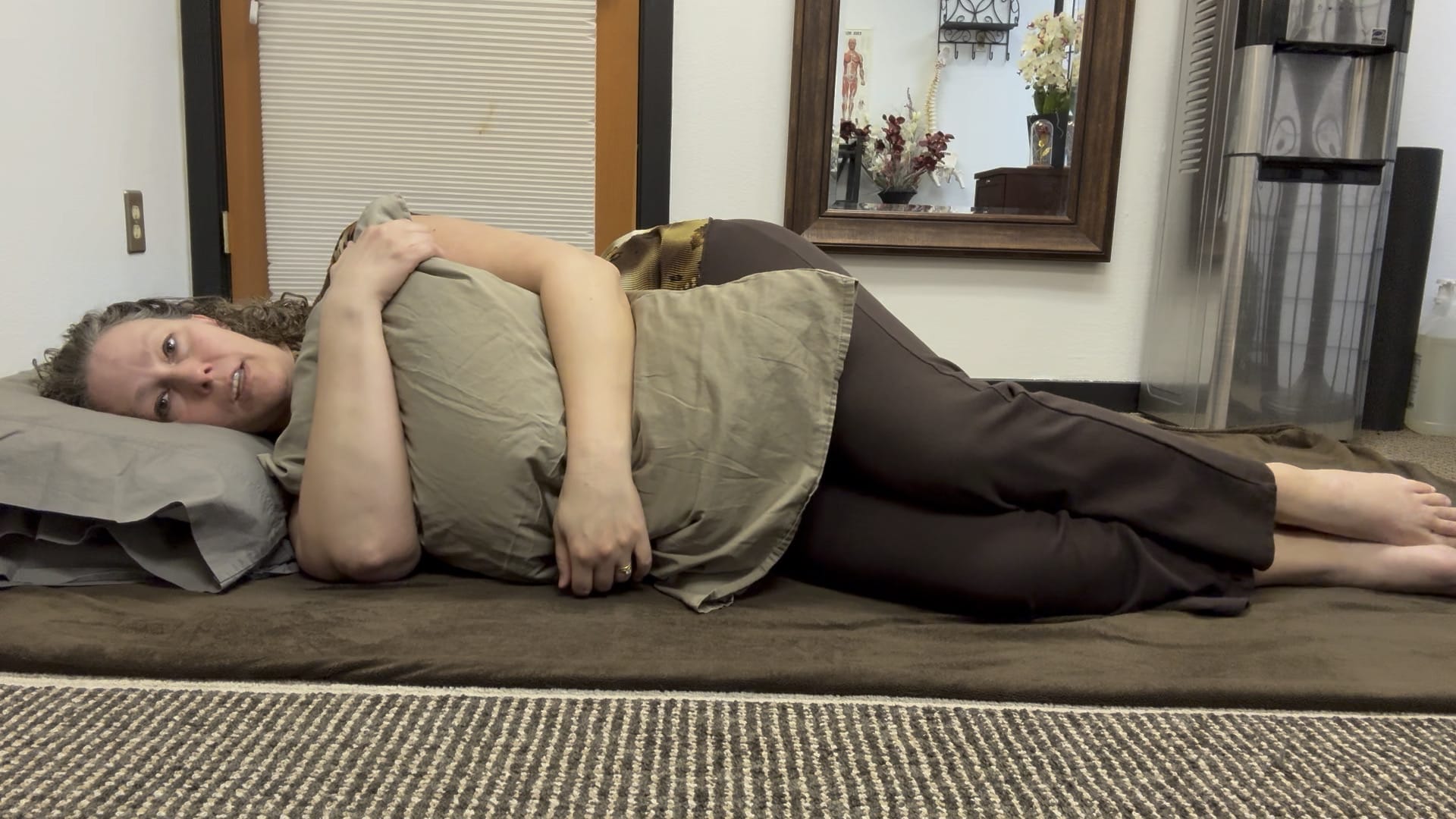Side Sleeping with support: A Simple Step-by-Step Guide from Emily Boudwin

Hello — I’m Emily Boudwin, a neuromuscular massage therapist and restorative exercise specialist. I created this guide to walk you through my personal, practical approach to side sleeping with support. If you sleep on your side and want to maintain a neutral spine, avoid numb or tingly hands, and wake up feeling rested instead of stiff, this tutorial is for you. In this post I’ll explain how I set up my pillows, position my arms and legs, and troubleshoot common problems so you can experience comfortable side sleeping with support every night.
Why side sleeping with support matters
Side sleeping is one of the most common sleep positions, but without the right support it can create misalignment through the neck, shoulders, and lower back. The goal of side sleeping with support is simple: keep the head aligned with the rest of the spine, avoid excessive rotation or bending, and reduce pressure on nerves that travel down the arms and legs.
From my experience working with clients and from my own sleep setup, the most frequent complaints I see are:
- Waking with neck discomfort because the head was tilted too far up or down.
- Tingling or numbness in the hands from the shoulder compressing nerves.
- Hip or low back pain from the legs rotating or compressing in an awkward angle.
When you apply the principles of side sleeping with support, these issues often improve substantially. Small changes — one pillow higher, a soft pillow to hug, a slight adjustment of the knees — can make a big difference.
What I use: my pillow setup
I keep my sleep setup very simple and practical. I use two identical firm pillows stacked on top of each other and a small, fluffy pillow I can hug. The stacked pillows allow me to fine-tune the height so my head sits neutral with my spine. The smaller pillow supports my arms and prevents shoulder compression.
Here are the details and why they work:
- Firm pillow for stable height: I use a Sealy pillow I bought at Costco because it won’t collapse after a few hours. When you are side sleeping with support, you want a pillow that stays consistent rather than one that compresses and lets your head drop.
- Stacking for adjustability: One pillow might be too low and two might be too high. Stacking allows me to remove one or add one depending on clothing layers, mattress softness, or how I feel that night. The principle of side sleeping with support is to get the head aligned — stacking helps you dial that in.
- Small hug pillow: I use a little, soft pillow to wrap my arms around. This keeps my shoulder from rolling forward and prevents pressure on the nerves that can cause tingly hands.

Head and neck alignment: the key to side sleeping with support
Ask yourself: is my ear roughly in line with my shoulder when I’m lying on my side? If the head is tilted down or lifted up, your neck muscles will compensate and you’ll likely wake with stiffness or pain. I often tell clients: “If your head leans forward or backward, your neck is doing extra work all night.”
How to achieve neutral alignment while side sleeping with support:
- Lie on your side and put the stacked pillow(s) under your head.
- Check the angle: your neck should continue the line of your spine. The ear should be aligned with the shoulder, not forward past the shoulder or tilted upward.
- If your head feels dropped, add height by keeping the second pillow underneath. If your head feels elevated, remove the top pillow or adjust the filling so it sits lower.
Playing with these small adjustments before you fall asleep is worth the effort. The right height will feel like a gentle continuation of your spine rather than something that tilts your head up or down.
Arm positioning: preventing numbness and discomfort
Many people instinctively hug their arms to their chest when side sleeping. That looks cozy, but it can press the shoulder forward and pinch nerves, leading to tingling or numbness in the hands. This is a common problem I encounter during client sessions. If you want to avoid this, try this option that I use regularly while side sleeping with support:
- Hug a small pillow: Place a small, plush pillow in front of you and wrap both arms around it. This keeps your shoulders in a neutral position and prevents the weight of the upper arm from compressing the shoulder.

Leg positioning: relieve hips and low back while side sleeping with support
How you position your legs matters for your hips and low back. When your top leg rotates forward and drops too far, it can twist your pelvis and create stress on the lower back. Here are my simple tips:
- Keep knees slightly bent — not tightly curled into a fetal position, but gently bent.
- If you like more separation between your legs, place a pillow between your knees. Choose a longer pillow if you want to keep the ankles apart too.
- I often let my top leg extend a little and rest the foot on top of the lower leg — that’s comfortable for me and keeps the hips neutral.
You don’t need an elaborate wedge or a proprietary gadget. A simple pillow between the knees or adjusting the top leg’s position is enough for most people practicing side sleeping with support.

Troubleshooting common problems
Even with the best intentions, small issues can pop up. Here are quick fixes for common complaints related to side sleeping with support:
- Neck still stiff in the morning: Re-evaluate pillow height. If your pillow compresses over time, switch to a firmer model. When in doubt, slightly raise or lower the pillow and test again.
- Tingly fingers: Ensure you’re not pinning your upper arm under your body. Use the small hug pillow or change arm position so the shoulder isn’t compressed.
- Hip or low back pain: Try a pillow between the knees or modify the top leg so it isn’t rotating the pelvis. A longer pillow can keep ankles aligned too.
Variations and personal tweaks
Everyone’s body is different, so side sleeping with support should be personalized. A few variations I’ve found helpful for clients and for myself:
- Try different pillow sizes and firmness levels until your neck feels neutral.
- If you sleep hot, choose breathable pillow materials — temperature can affect how many pillows you want stacked.
- Use a body pillow if you like more full-body support; it can be especially helpful during pregnancy or if you prefer more length between the knees and ankles.
Remember: the main principle remains consistent — align the head with the spine and minimize pressure on nerves and joints while side sleeping with support.
Additional resources and further reading
If you’re interested in learning more about how posture, neck tension, and sleeping position affect pain, I have several in-depth guides and videos on related topics. Here are some helpful links from my practice:
- Headaches, migraines, jaw pain resources: https://restorativehealthandwellness.com
- Suboccipital self-massage guide: https://restorativehealthandwellness.com/suboccipital_self_massage_guide/
- Understanding suboccipital headaches: https://restorativehealthandwellness.com/understanding_suboccipital_headache_causes_solutions/
- Do you get hip pain? How how you sit and lay down affects hip pain: https://restorativehealthandwellness.com/do-you-get-hip-pain-watch-this-video-to-find-out-what-you-can-do/
- Relax your spine with a rhomboid pushup exercise: https://restorativehealthandwellness.com/relax-your-spine-with-this-rhomboid-pushup-exercise/
- About neuromuscular massage and my practice: https://restorativehealthandwellness.com/about-neuromuscular-massage-therapist/
- Schedule a medical massage with me: https://restorativehealthandwellness.com/contact-us-and-schedule-your-massage/
- More blog content and tutorials: https://restorativehealthandwellness.com/blog/
Final checklist: quick steps for perfect side sleeping with support
- Lay down on your side with your spine long and relaxed.
- Use stacked pillows to position your head so the ear aligns with the shoulder.
- Hug a small pillow to keep your shoulder neutral or place one arm along your hip.
- Keep knees slightly bent; use a pillow between knees if needed.
- Make tiny adjustments until you feel balanced and supported — a small tweak is often the difference between a good and a bad morning.

Closing thoughts from me, Emily
Side sleeping with support doesn’t require fancy equipment — just a few thoughtful choices about pillow height, arm support, and leg position. As a neuromuscular massage therapist, I see how these small changes reduce strain and help people wake up without pain. My approach is practical and approachable: stack pillows to get the right height, hug a small pillow to protect your shoulder, and keep the legs positioned to avoid twisting the pelvis. Try these adjustments for a week and notice how your mornings change.
If you’d like personalized help or have persistent neck, shoulder, or hip pain, consider booking a session so I can assess your alignment and movement patterns in person. You can learn more and contact me at: https://restorativehealthandwellness.com/contact-us-and-schedule-your-massage/
Sweet dreams — and remember: small supports make big differences when it comes to side sleeping with support.
Did this post help you! |
|
Then sign up for our FREE Email Newsletter! |
| Sign Me Up! |








